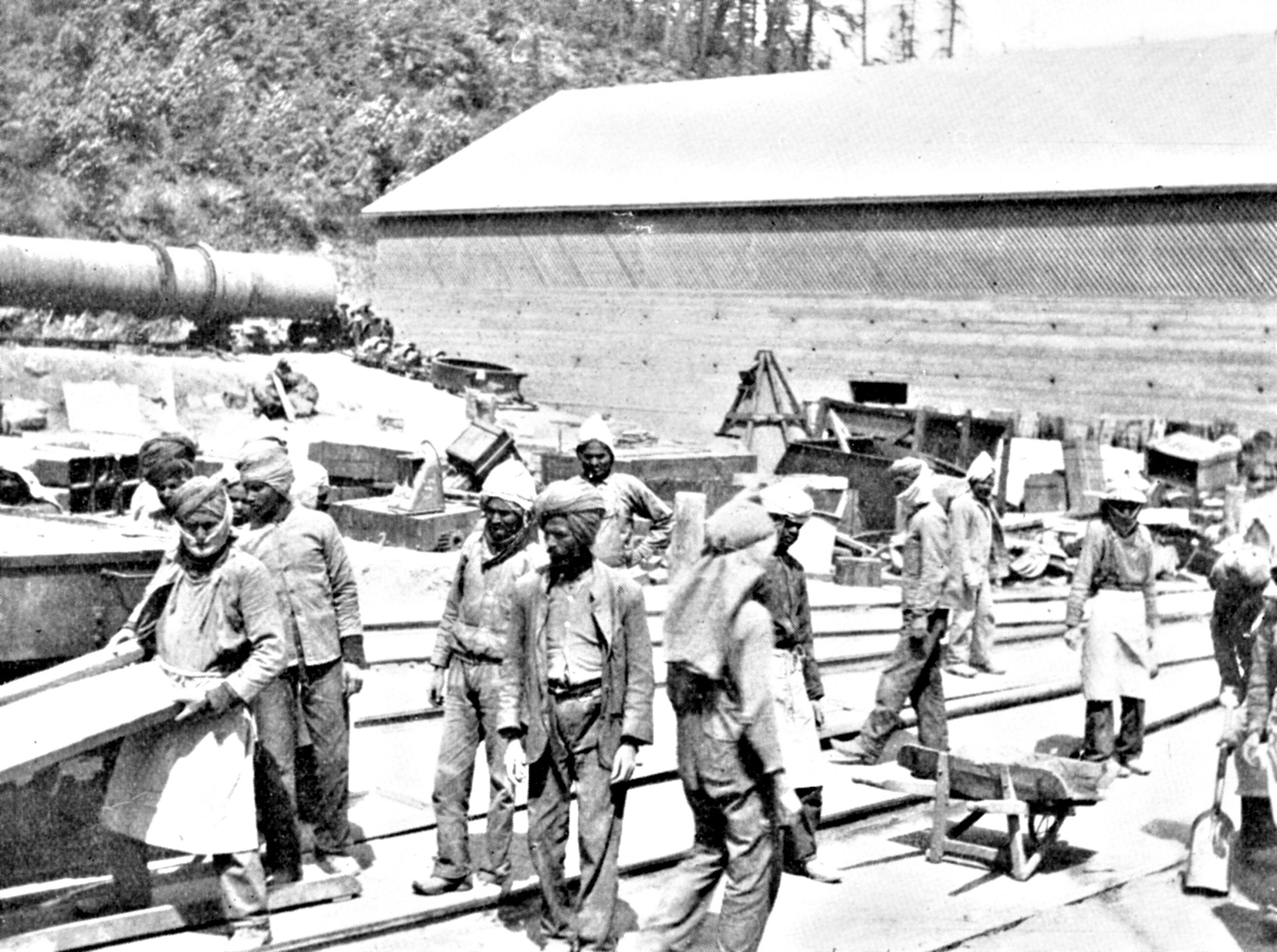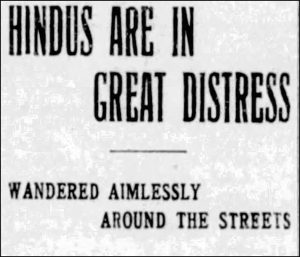
Vancouver Portland Cement Company’s plant at Tod Inlet was an early — though short-lived — location where South Asians found work starting in 1906 in an industry other than sawmilling. The story of South Asians at Tod Inlet includes one of the earliest mentions of South Asian workers asserting power over their working conditions by going on strike.
The cement plant was beside the limestone quarry now known as Butchart Gardens north of Victoria BC. The first arrival of 40 Sikh men are believed to have come from Jandiala village (in the Jullundar district of Punjab) on the CPR steamship Tartar. [1]
“When we landed in Victoria, I heard there is a cement mill about 20 miles from Victoria. There is one of our friends, who is come from our village, he was a foreman over there. So we, about 30 or 40 people, go to that cement mill.” They learned that people working there were getting a dollar and a quarter a day for 10 hours of work. “So … my friend tried to the mill owner, if they could hire some more people. But unfortunately, is another foreman beside my friend, and some his friends coming the same ship as we coming. They went to the mill owner, they offer, they can supply the man for dollar a day. So he get the job, we been refused.”[2]
“I remember when my grandfather Thakar used to tell us stories … about when he first came to Canada. They didn’t know where to live and there was no place to go. There was no temple at the time, so they pitched tents right where the Empress Hotel now is.”
“And the group of men that had immigrated with my grandfather, they pitched tents there. There were mud flats there, and that’s where they lived and slept … My grandfather walked all the way up to the cement plant by Butchart Gardens.” [3]

Working conditions were terrible; breaking rock, screening it and packing it in sacks was all done by hand, physically hard and dirty. It included packing heavy sacks of cement onto the ships while lime dust flew about, coating their beards and turbans.

In 1906, 15 workers at Tod Inlet went on strike to protest the unhealthy working conditions which caused bronchitis and throat ailments. The men walked 20 KM to Victoria and camped downtown without food or shelter. When found huddled from the rain beneath blankets, the Victoria Police gave them shelter at City Hall.
Addressing a heated meeting of the Tourist Association the next day Victoria Mayor Alfred Morley defended this decision. He “permitted them to be sheltered during the inclement weather. It was a simple act of charity, which had put the corporation to no expense whatever”.[4]
“We came to work, not to die”
It wasn’t long before the South Asian workers became so dissatisfied with the unhealthy working conditions at Tod Inlet they decided it was better to leave. Tod Inlet had become a “place of breeding death” because of tuberculosis, made worse by the cement and coal dust, and typhus from the polluted stream. Most left in late 1911, migrating to work in sawmills on Vancouver Island and other places in BC. [5]
- David R. Gray, Deep and Sheltered Waters: The History of Tod Inlet (Victoria: Royal British Columbia Museum, 2018), 51. ↵
- Gurdit Singh Bilga, "Komagata Maru Affair", radio interview, 1964, Sound reels 478 #4A, Box 994, f.15, Canadian Museum of History Archives, cited in David R. Gray, Deep and Sheltered Waters, 52. ↵
- Jeto Sengara, interview, cited in David R. Gray, Deep and Sheltered Waters, 54. ↵
- "Importation of Hindus Condemned by Some Members of Tourist Society", Victoria Daily Times, August 15, 1906, 3. ↵
- David R. Gray, Deep and Sheltered Waters, 98. ↵
